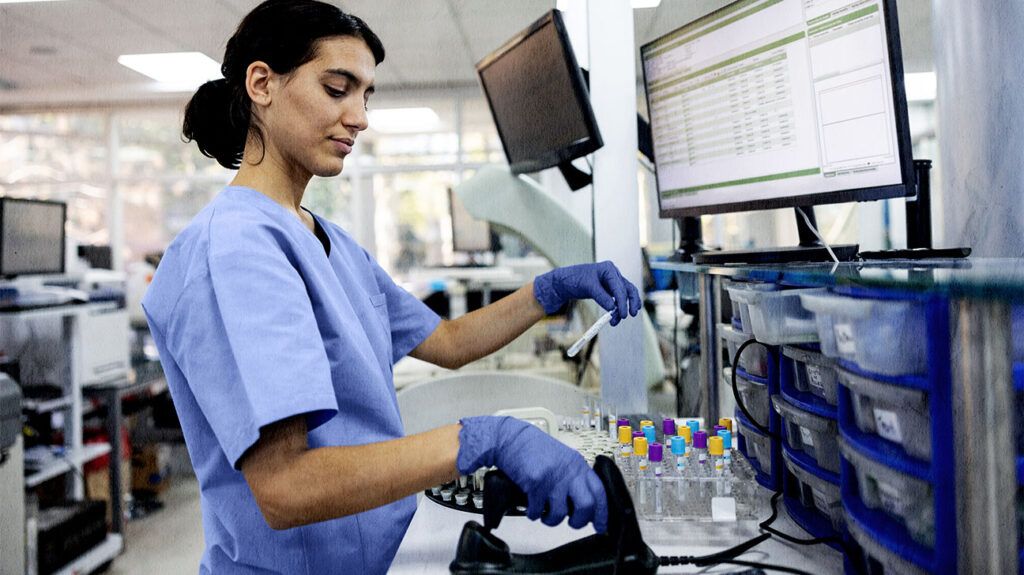Angiodysplasia of the colon refers to swollen blood vessels in the colon that may weaken and rupture, resulting in bleeding and lesions. Angiodysplasia may lead to various complications. However, it is typically treatable.
Angiodysplasia can occur in different areas of the gastrointestinal (GI) tract, including the stomach, small intestine, and colon.
The condition
Angiodysplasia of the colon can cause GI bleeding and anemia, although the condition does not always cause symptoms. Doctors can usually treat the condition.

Experts do not fully understand the causes of angiodysplasia of the colon.
Researchers have
- the natural degeneration of GI blood vessels due to aging
- heart and lung diseases, which may reduce blood flow in the small blood vessels in the GI tract
- certain blood disorders, such as von Willebrand disease, which may lead to bleeding angiodysplasia lesions
Researchers also believe that normal spasms that happen in the GI tract can lead to blood vessel enlargement over time.
As the enlarged vessels become congested and obstructed, small pathways may develop to provide alternative routes for blood flow. These changes can increase the risk of GI bleeding.
Risk factors that healthcare professionals associate with angiodysplasia of the colon include:
- age, as angiodysplasia of the colon is a common cause of GI bleeding in people older than 60 years
- aortic stenosis, which involves the narrowing of the aortic heart valve
- heart disease
- lung diseases
- von Willebrand disease
- end stage renal disease, the final stage of chronic kidney disease
- a left ventricular assist device, which is a heart pump that a surgeon implants to treat heart failure
- scleroderma, a skin disorder that causes connective tissues to harden
If angiodysplasia of the colon does not cause the blood vessels in the colon to bleed, a person may not have symptoms.
When bleeding does occur, the blood vessels in the colon may bleed intermittently and slowly. The blood is not typically visible in stools.
GI bleeding can lead to iron deficiency anemia, which can cause symptoms including:
- fatigue
- weakness
- paleness
- headaches
- lightheadedness
- shortness of breath
- cold hands and feet
To diagnose angiodysplasia of the colon, a healthcare professional may perform a physical examination and assess a person’s vital signs at the start of their evaluation.
They may perform or order various tests to check for bleeding in the colon and other symptoms. Tests may include:
- colonoscopy, in which a doctor inserts a small camera attached to a tube into the colon by way of the rectum
- a stool test to check for blood
- a blood test called a complete blood count (CBC)
- CT or MRI angiograms, which are types of CT or MRI scans that can help reveal active bleeding in the intestine
Learn about the anatomy of the colon.
Treatment for angiodysplasia of the colon can depend on various factors. These
If a person does not have a history of GI bleeding or symptoms of anemia, a doctor may choose not to treat angiodysplasia but rather monitor the condition over time.
A doctor may base their treatment decisions on the severity of a person’s symptoms.
Treatment can
- intravenous (IV) fluids
- CBC monitoring through blood tests
- argon plasma coagulation ablation, in which doctors use ignited argon gas to cauterize (close by burning) blood vessels
- electrocoagulation, which involves using heat from an electric current to cauterize the blood vessels
- angiography, which involves using a thin tube to deliver medication, glue, or small particles to block the blood vessels
- sclerotherapy, in which doctors inject a solution that causes blood vessels to become smaller
- angiogenesis inhibitors, which are medications that block blood vessel growth
- blood transfusion
- surgical resection, to remove part of the colon
Rarely, angiodysplasia can result in massive GI bleeding. This can cause hemodynamic instability, which is insufficient blood flow.
If a person notices any symptoms of massive GI bleeding,
A person should also contact a doctor if they have symptoms of iron deficiency anemia. Without treatment, this condition
The outlook for those with angiodysplasia of the colon is typically good. When bleeding does occur, it usually resolves without treatment.
The outlook may be worse if a person has
Some people experience recurrent bleeding even with treatment. However, with monitoring and treatment, people can often manage the symptoms.
What does poop with a GI bleed look like?
GI bleeding caused by angiodysplasia of the colon is
What foods should you avoid with GI bleeding?
A doctor may advise a person to avoid eating foods that can irritate the gut, such as spicy foods and those high in fats and sugars.
Angiodysplasia of the colon is a condition in which the blood vessels in the colon become enlarged. This can lead to gastrointestinal bleeding.
Angiodysplasia can lead to complications, including iron deficiency anemia and chronic occult bleeding.
The condition does not always require treatment. If the bleeding is severe, a doctor may treat it with medication, cauterization, or surgery to resect part of the colon.
